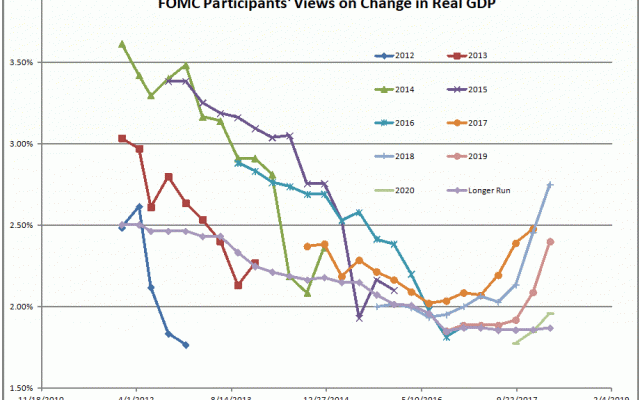Listening to the Fed Chair’s press conference, there was one thing where I disagreed with what Powell was saying. He said a few times that they only made one decision at the FOMC meeting, that of raising the Fed Funds rate and the reverse repo rate by 0.25%. They made another decision as well. They decided to raise the rate of quantitative tightening [QT] by increasing the rate of Treasury, MBS and agency bonds rolloff by $10B/month starting in April. They did that by increasing the rate of reduction of MBS and agency bonds from $8B to $12B/month, and Treasuries from $12B to $18B/month. The total rate of QT goes from $20B to $30B/month.This may raise rates on the longer end, because the Fed will no longer buy so much debt.
There was also a little concern over people overinterpreting the opinions of the Fed Governors, especially over the “dot plot,†which shows their opinions over real GDP growth, the unemployment rate, PCE inflation, and the Fed funds rate.My point of view is simple.If you don’t want people to misinterpret something, you need to defend it or remove it.
Personally, I think the FOMC invites trouble by doing the forecasts. First, the Fed isn’t that good at forecasting — both the staff economists and the Fed Governors themselves. Truly, few are good at it — people tend to either follow trends or call for turns too soon.Rare is the person that can pick the turning point.
Let me give you the charts for their predictions, starting with GDP:

The Fed Governors have raised their GDP estimates; they raised the estimates the most for 2018, then 2019, then 2020, but they did not raise them for the longer run. It seems that they think that the existing stimulus, fiscal and monetary, will wear off, and then growth will return to 1.8%/year. Note that even they don’t think that GDP will exceed 3%/year, and generally the Fed Governors are paid to be optimists. Wonder if Trump notices this?


